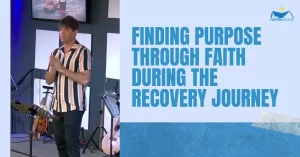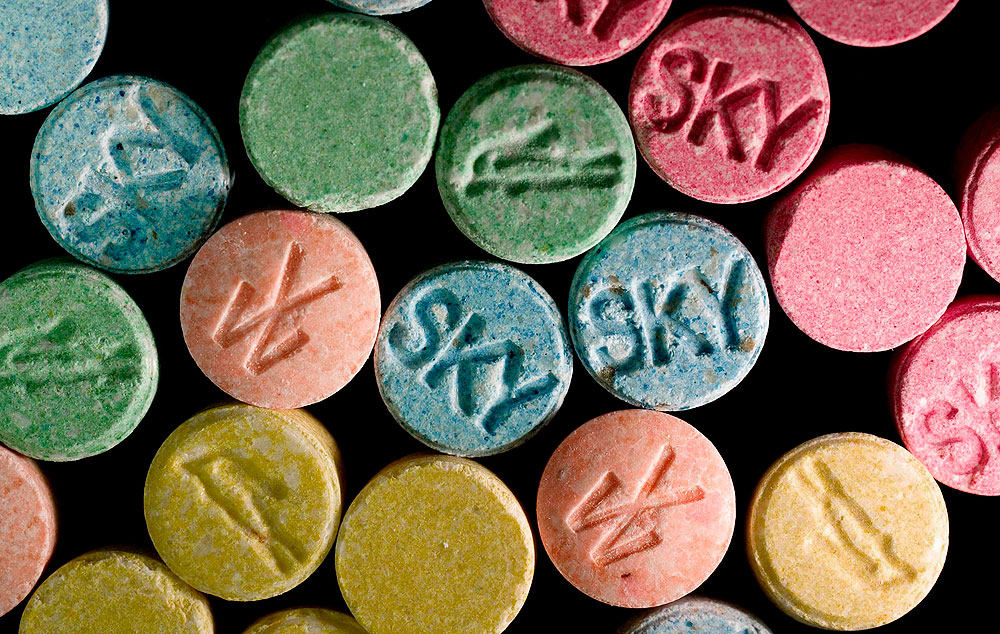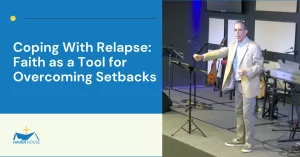

Table of Contents
Club drugs are often take at raves. “Raves” are large dance parties which are held in unusual settings like warehouses or railroad yards. The run all night and feature computer generated, high volume, pulsating music known as “techno” or “house” music. Rave clubs got their start in England during the late 1980’s and are known for the music and use of drugs like Ecstasy.
Rave club goers are known as “Ravers”. Not all “Ravers” consume club drugs. The club scene seems to be attracting adolescents from ages 13 to young adults in their mid-to-late 20’s. Party announcements can be found posted on colorful fliers, through word of mouth, and even on the Internet. The phenomenon known as the “Rave Movement” has been compared to the “Peace & Love Movement” of the 1960’s and 1970’s. Partygoers can often be found with surgical facemasks (used to inhale various club drugs), baby pacifiers (used to control the teeth grinding that goes along with Ecstasy use), and glow sticks (used to heighten the “high” from hallucinogenic substances).
What club drugs are being used on the Rave dance scene? There are a variety of drugs that have been connected with Rave Clubs. This is a brief list of some of the club drugs by slang names and a list of their possible effects:
Ecstasy
Hallucinogen/Stimulant – Ecstasy is a synthetic drug that is similar to methamphetamine and the hallucinogen mescaline. Ecstasy can produce a significant increase in heart rate and blood pressure. It also causes a sense of alertness. The stimulant effects, which enable users to dance for extended periods, may also lead to dehydration, hypertension, and heart or kidney failure. Ecstasy can cause brain damage. Despite the risks to the user, Ecstasy is one of the most widely used of the club drugs.
Ephedrine
Stimulant – This substance is sold over-the-counter at convenience stores, some food stores, and through mail order. It is often sold as ‘Herbal Ecstasy’ and is touted as a ‘safe’ and ‘legal’ form of Ecstasy. Ephedrine is in the Amphetamine family and can cause heart attacks, seizures, agitation, palpitations, and other health problems. Ephedrine is a common weight-loss substance. The FDA has proposed restrictions on ephedrine after it received more than 800 reports of harmful effects to people. Among the reports were coronary problems that could put patients at risk for heart attacks, strokes, and death.
Ketamine
Hallucinogen – Ketamine is an animal tranquilizer used by vets in pet surgery. Users say the effects of Ketamine are similar to PCP. Ketamine is usually snorted and is frequently used in combination with other drugs like ecstasy, heroin, and cocaine. The high lasts anywhere from 30-minutes to about 2-hours. Special K or powdered Ketamine emerged as a recreational drug in the 1970s and was known as “Vitamin K’ in the underground club scene in the 1980s. It has since resurfaced as “Special K” in the 1990s rave scene.
GHB
Depressant – This substance comes in a liquid form and looks like water. It is said to have a salty taste. GHB is used as a “club drug” for effects similar to those of Rohypnol, also known as the “date rape drug.” Coma and seizures can occur following use of GHB and when combined with methamphetamine. Mixing GHB with alcohol can be a deadly combination. Excessive use of GHB can result in loss of consciousness (G-hole), tremors, irregular and depressed respiration, or coma.
Methcathinone
Stimulant – Known on the street as Khat or cat, it produces an amphetamine like effect. The drug produces a burst of energy and feeling of invincibility accompanied by a state of well being and euphoria. Effects include paranoia, hallucinations, nervousness, and anxiety. Physical effects can be a pounding heart, headaches, stomach aches, and shakes. Khat is most often snorted but may also be injected with a needle or taken orally by mixing with a beverage such as a soft drink.
LSD
Hallucinogen – LSD induces abnormalities in sensory perceptions. Effects are unpredictable depending on the amount taken, on the surroundings in which the drug is used, and on the user’s personality, mood, and expectations. It can be in the form of a tablet, capsule, liquid, or on pieces of blotter paper that have absorbed the drug. It is typically taken by mouth. Effects present themselves within 30 to 90 minutes after taking the drug and can include physical effects of dilated pupils, higher body temperature, increased heart rate and blood pressure, sweating, loss of appetite, sleeplessness, dry mouth, and tremors.
Magic Mushrooms
Hallucinogen – The effects of Mushrooms or “Shrooms” are similar to LSD. They include illusions and hallucinations as well as distorted perception of time and distance. It is ingested orally in the form of tablets or powder. Trips or episodes can consist of psychosis, convulsions, flashbacks, and possibly death.
Methamphetamine
Stimulant – Methamphetamine affects many areas of the central nervous system. The drug is often made in clandestine laboratories from relatively inexpensive over-the-counter ingredients. Diverse groups including young adults who attend raves are using it. It is used by people in all regions of the country. It is available in many forms and can be smoked, snorted, injected, or orally ingested. Methamphetamine use is associated with serious health consequences including memory loss, aggression, violence, psychotic behavior, and potential cardiac and neurological damage. Abusers are typically agitated, have excited speech, decreased appetite, and increased physical activity levels.
Some of the club drugs on this list are not new to the drug scene. At least half of them were being abused in the 1960’s, 1970’s and 1980’s. During the 90’s, emergency room admissions increased due to use of club drugs. It can be very dangerous to mix some of these club drugs together and/or to take with alcohol.
Newsletter Signup
Discipleship Training
“The teaching of the wise is a Fountain of Life, turning a person from the snares of death.”
Proverbs 13:14 NIV


